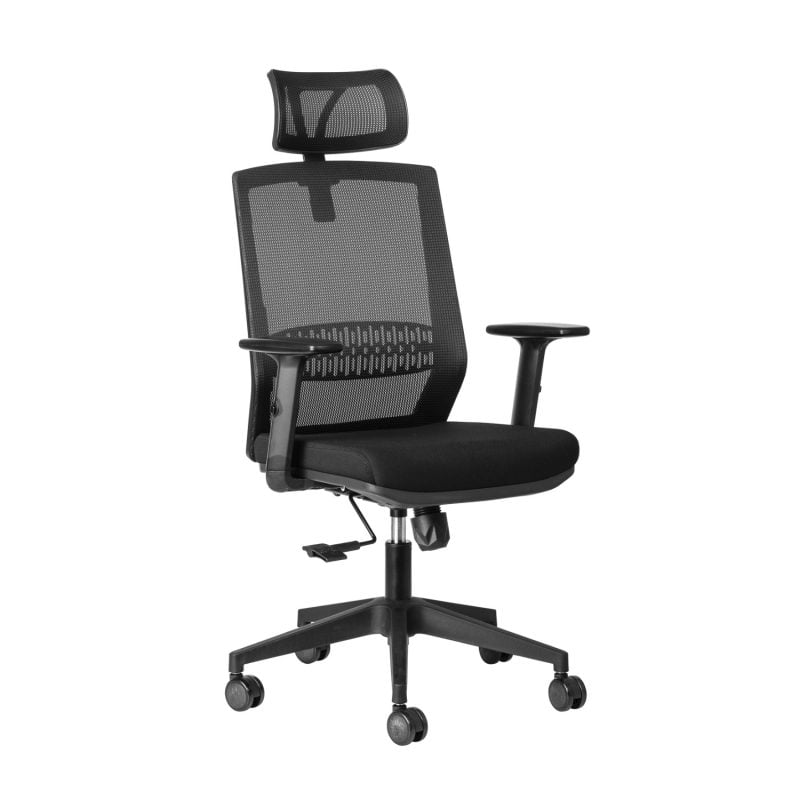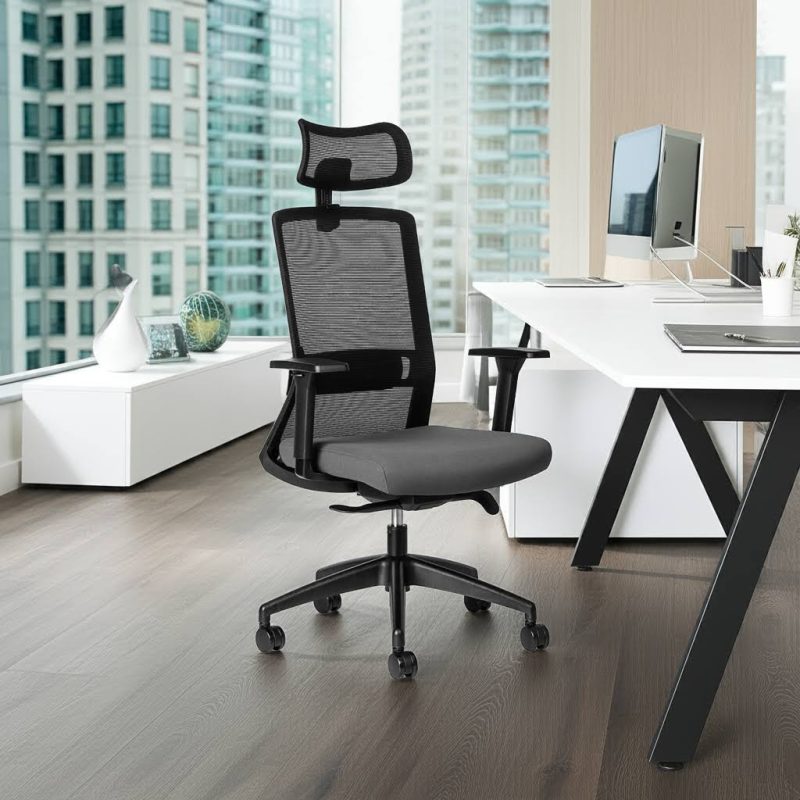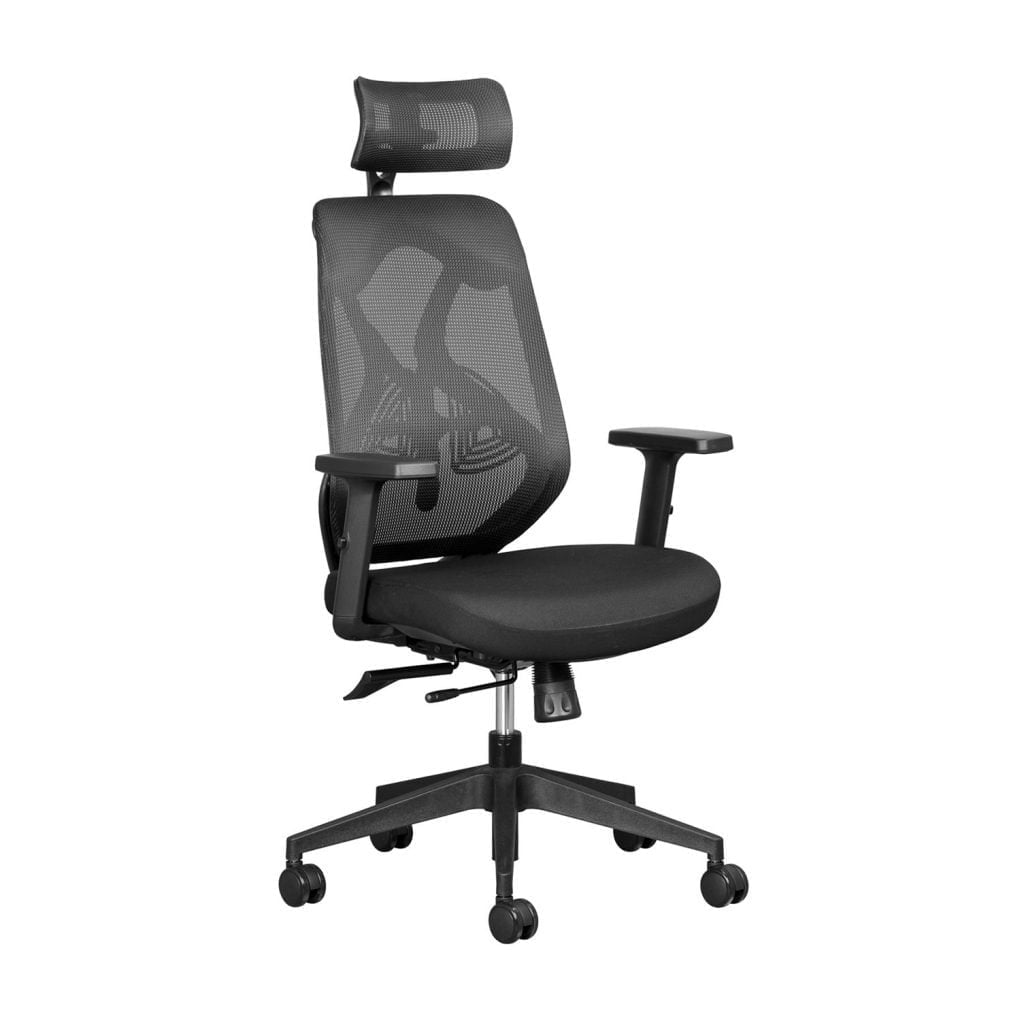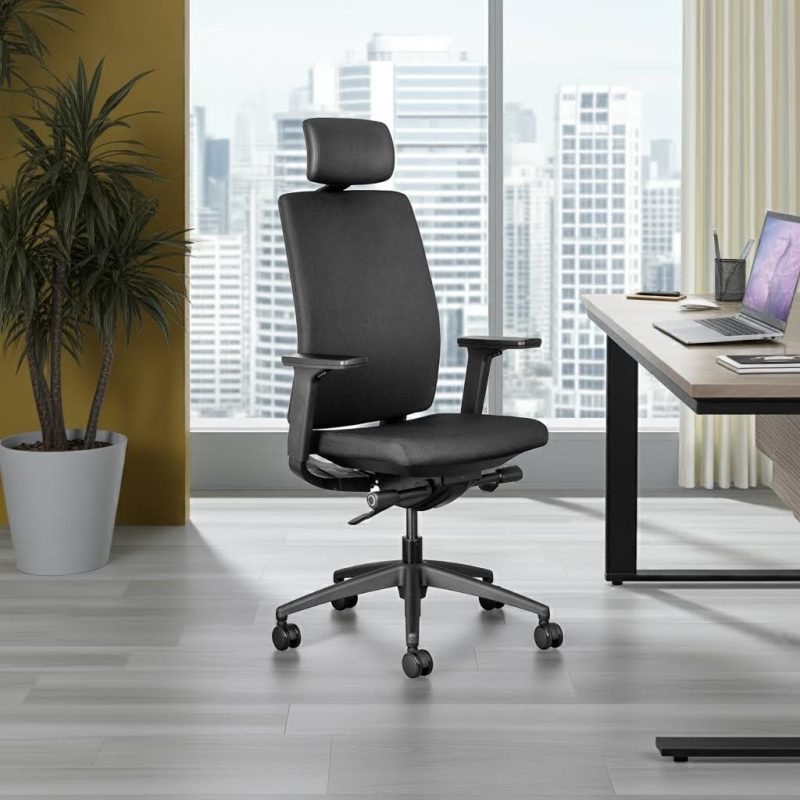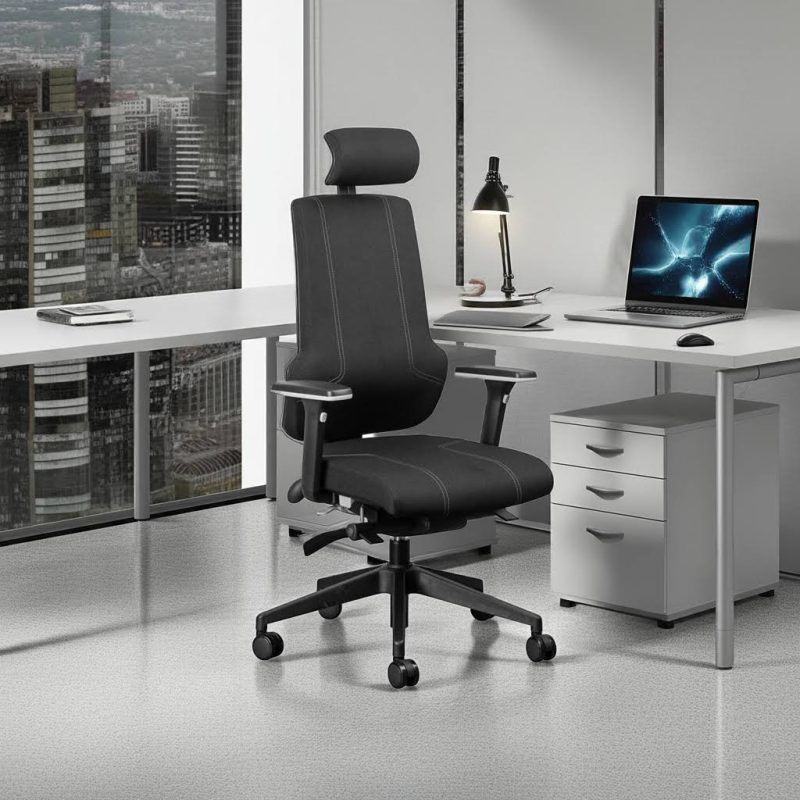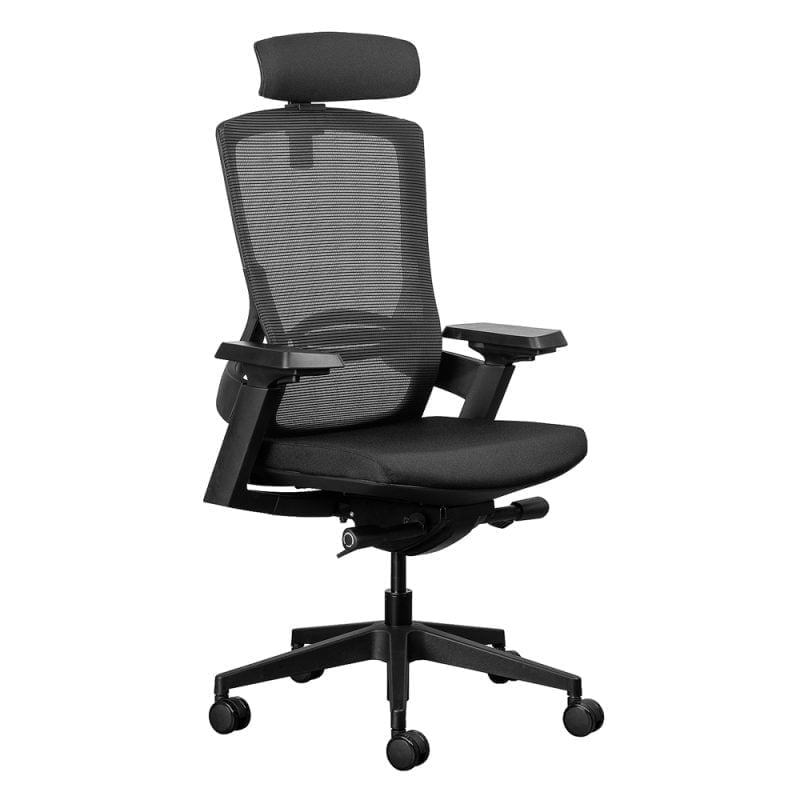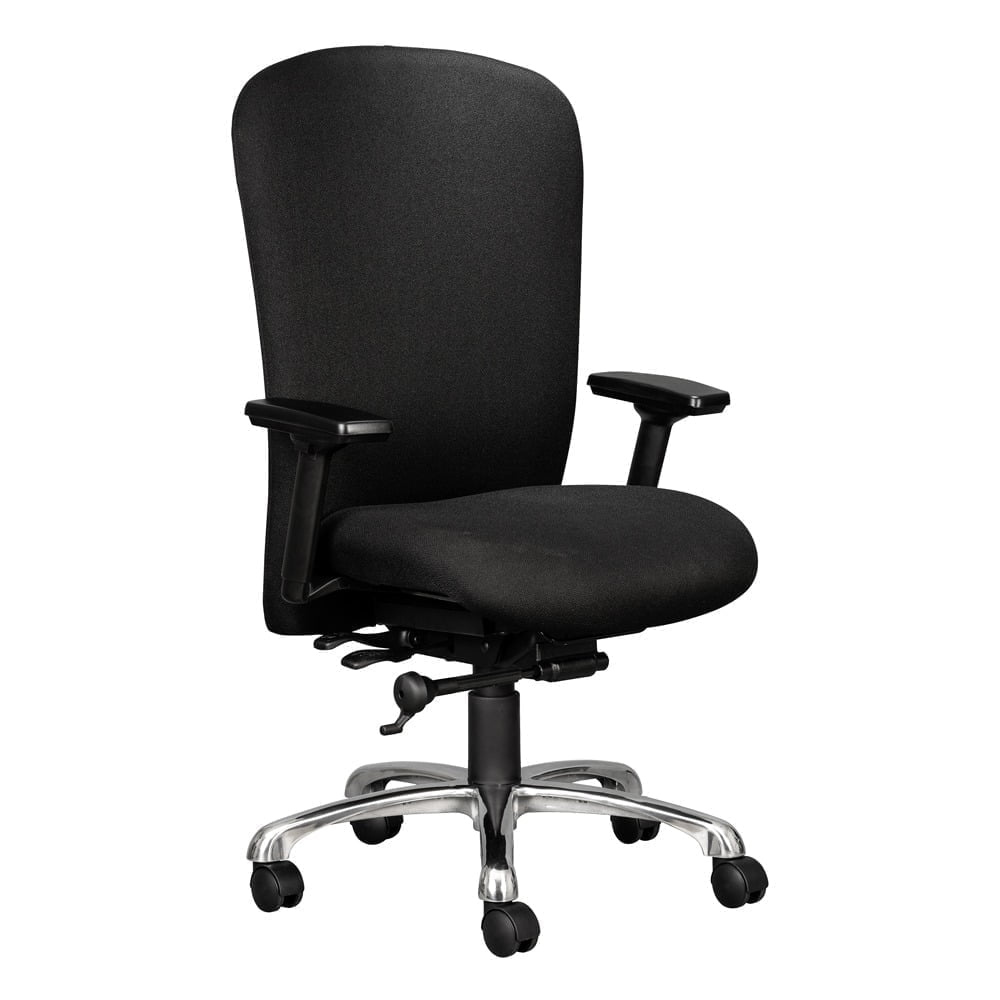When it comes to furnishing an office, whether it be at home or in a corporate setting, one of the most critical investments you can make is in a quality office chair. Often overlooked, the humble office chair is not just a piece of furniture, but a pivotal tool that can significantly influence your productivity, health, and overall wellbeing. So, how much should you budget for an ergonomic office chair?
As Warren Buffett famously said, "Price is what you pay. Value is what you get."
This wisdom holds especially true in the context of choosing an ergonomic office chair.
The importance of ergonomics in office furniture cannot be overstated, as it directly correlates with our comfort and, by extension, our work performance. But how much should one reasonably budget for a quality office chair and furniture for your business? It's a question of balancing cost with the long-term value it brings, much like choosing a good investment in the stock market. In this article, we'll explore the factors that affect the cost of ergonomic chairs, why investing in one is a wise decision, and how to determine the right amount to spend without compromising on quality or financial wisdom. Why the Leila is the best value ergonomic office chair in South Africa.
With an eye on both comfort and cost, let's delve into what makes a chair not just a seating option, but a cornerstone of a productive and healthy workspace. How to Protect Your Health in the Age of the Office Chair
Understanding the Value of Ergonomic Chairs
Before diving into budget considerations, it's essential to understand what an ergonomic chair is and why are worth the investment. Ergonomics is the study of people in their workplace and is the process in which workplaces, products and systems are designed or rearranged so that they fit the people who use them. It aims to improve workspaces and environments to reduce the risk of injury. Achieving a Healthy Sitting Position at the Office: Your Guide to Ergonomic Comfort. This approach minimises the risk of injury and maximises productivity — a principle that aligns well with the investment philosophy of buying quality stocks that offer long-term benefits.
The Health Benefits
An ergonomic chair supports the body's natural posture, reduces stress on the spine, and alleviates joint and muscle pain. By promoting proper posture, these chairs help prevent the development of musculoskeletal disorders which can arise from prolonged sitting in a poorly designed chair. The benefits extend beyond physical health, as a comfortable employee is also a more focused and productive employee.
Enhanced Productivity
The comfort provided by an ergonomic chair translates directly into improved productivity. A chair that can be adjusted to fit the specific needs of its user allows for longer periods of concentration and less need for frequent breaks due to discomfort. Over time, this leads to significant gains in productivity, which can easily justify the initial investment. The 8 Requirements of a Comfortable Office Chair.
Longevity and Durability
Quality ergonomic office chairs are designed to last. Unlike cheaper alternatives that might need frequent replacements, a well-made ergonomic chair can endure years of use. This durability means that the cost per year can be lower than that of a less expensive model, which aligns with the investment strategy of paying a bit more upfront for long-term savings and benefits. Are Strong Ergonomic Office Chairs Worth It?
Before you can determine how much you should budget for an ergonomic office chair, you first need to understand the factors that influence the cost of chairs. How ergonomic chairs are made. This will allow you to strike the right balance between price and features, and therefore find the best value for your investment.
Key Factors Influencing the Cost of Ergonomic Office Chairs
When considering the purchase of an ergonomic office chair, the price can vary significantly based on several factors. Understanding these can help you make a more informed decision, ensuring you invest in a chair that meets both your physical needs and your budgetary constraints. How to avoid the hidden costs when buying ergonomic office chairs online.

1. Materials and Build Quality
- Materials: High-quality materials such as breathable mesh, durable fabric, or genuine leather increase the comfort and lifespan of a chair but also add to the cost.
- Build Quality: Chairs designed with superior craftsmanship require more precise engineering and better-quality components, all of which reflect in their price.
2. Adjustability and Features
- Adjustability: The more adjustable a chair is, the more it can be customised to fit individual ergonomic needs. Adjustable armrests, lumbar support, seat depth, and tilt mechanisms contribute to the cost.
- Features: Additional features like headrests and advanced mechanisms that allow Dynamic Sitting can also increase the price.
3. Brand and Warranty
- Brand: Established brands often charge more due to their market reputation and the perceived reliability of their products. Expensive office chairs: Alya vs Humanscale Liberty
- Warranty: Chairs that come with a long-term warranty might be pricier upfront but offer peace of mind regarding potential future repairs or replacements. Many Karo chairs have a 10-year warranty.
4. Design and Aesthetics
- Aesthetic Appeal: Design-oriented chairs that also serve as office décor may carry a premium over more functional, less stylish options.
- Innovative Design: Ergonomic chairs that incorporate the latest in ergonomic research or groundbreaking design features often command a higher price. Chair Design – Important Factors to Consider
How Much You Budget for an Ergonomic Office Chair is a Balance between Cost and Quality
How do you balance the cost with the quality when selecting an ergonomic office chair? Here are a few tips inspired by investment principles:
- Think Long-Term: Consider the chair an investment in your health and productivity. A higher upfront cost can lead to greater savings in terms of health benefits and durability. How much does an office chair really cost you?
- Budget Flexibility: Set a reasonable range rather than a fixed number. This allows you to explore a variety of options and find the best value within a range that you can afford.
- Research and Compare: Just as you would compare investment opportunities, compare different chair models, check user reviews, and assess the total value they offer for their price.
- Test Before Buying: If possible, try out different chairs. Just as no investment portfolio suits everyone, no one chair is right for every body type or workspace. Office Chairs Johannesburg – Karo’s Ergonomic Wonderland

Determining How Much You Should Budget for an Ergonomic Office Chair
Setting a budget for an ergonomic office chair involves a thoughtful analysis of your needs, the value offered by the chair, and your financial constraints. Just as in investing, where no single stock fits all portfolios, no single chair suits all individuals or budgets. Here’s how you can define what you should spend:
Step 1: How many hours a day do you use the chair?
- Frequency of Use: Consider how many hours per day you will be using the chair. The more time you spend in your chair, the more you might justify spending on higher-quality ergonomics.
- Intensity of Use: Evaluate the nature of your work. Do you need to move frequently, or do you stay in a static position? Chairs that offer dynamic movement features might be worth the investment if your work involves a lot of sitting.
Step 2: Evaluate Your Health Needs
- Existing Issues: If you have pre-existing back problems or other health concerns, investing in a chair with superior ergonomic support becomes even more crucial. Back support for an office chair – why it’s important
- Preventive Care: For those without current issues, consider the potential long-term health benefits of reducing the risk of future problems. The 5 consequences of sitting on the wrong chair
Step 3: Understand the Long-Term Value
- Cost Versus Value: A more expensive chair that lasts longer and offers more support may provide better value over time than a cheaper, less supportive option.
- Depreciation and Warranty: Factor in the depreciation and the length of the warranty. A chair that may seem expensive but comes with a 10-year warranty might end up being cheaper in the long run than one that needs to be replaced every few years.
Step 4: Set a Flexible Budget Range
- Minimum and Maximum Spend: Based on your needs and the chairs available, set a realistic budget range. For instance, if you determine that chairs in the R3000 to R4500 range meet your needs, set that as your bracket.
- Willingness to Adjust: Be prepared to adjust your budget slightly if a slightly more expensive chair offers significantly greater benefits.
Practical Budget Ranges For Ergonomic Office Chairs
To give you a starting point, here are some practical budget ranges based on general needs. You may also want to review our 5 Best Ergonomic Office Chairs for Long Work Sessions.
Basic Ergonomic Chairs
For light to moderate use, basic models range from R3000 to R4500.
Mid-Range Ergonomic Chairs
For average to intensive use, with good adjustability and features, consider chairs in the R4500 to R7000 range.
High-End Ergonomic Chairs
For heavy use or for anyone wanting the best possible ergonomic features, consider chairs above R7000.
Elara Ergonomic Office Chair
Skye Office Chair
R3250 – R3460Price range: R3250 through R3460 incl VATLuna Ergonomic Office Chair
R4405 – R4599Price range: R4405 through R4599 incl VATCapri Ergonomic Office Chair
Yen Ergonomic Office Chair
OrthoAir Orthopedic Chair
Leila Ergonomic Office Chair
ErgoCurve Ergonomic Office Chair
Mira Ergonomic Office Chair
R6765 – R6995Price range: R6765 through R6995 incl VATMira-Mesh Ergonomic Office Chair
R6779 – R6999Price range: R6779 through R6999 incl VATFenix Ergonomic Office Chair
Evolv Ergonomic Office Chair
R8095 – R8295Price range: R8095 through R8295 incl VATOrthoMax Orthopedic Chair
Firefly Ergonomic Office Chair
Alya Ergonomic Office Chair
Heathrow 24/7 Heavy Duty Chair
R8950 incl VATConclusion
Just like making a prudent investment, choosing an ergonomic office chair requires considering both the immediate cost and the long-term returns. Investing wisely in your chair can save you from future health expenses and boost your productivity, providing returns that outweigh the initial expense.
By the same author:

The 5 consequences of sitting on the wrong chair
The consequences of sitting on the wrong chair include poor blood flow, fatigue, back and neck pain. Quite simply, a bad office chair is unhealthy.

Remote Work: The Pros and Cons
Remote work has gained a lot of traction globally and in South Africa, but what is it, and what are the pros and cons?

Office Pods: Give Your Team the Quiet Space They Deserve
Give your team the quiet space they need to focus and perform. Discover how office pods transform noisy open-plan workplaces into productive, inspiring environments.



